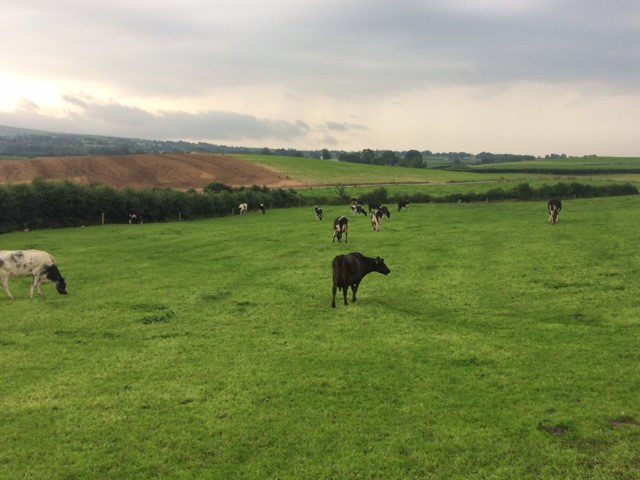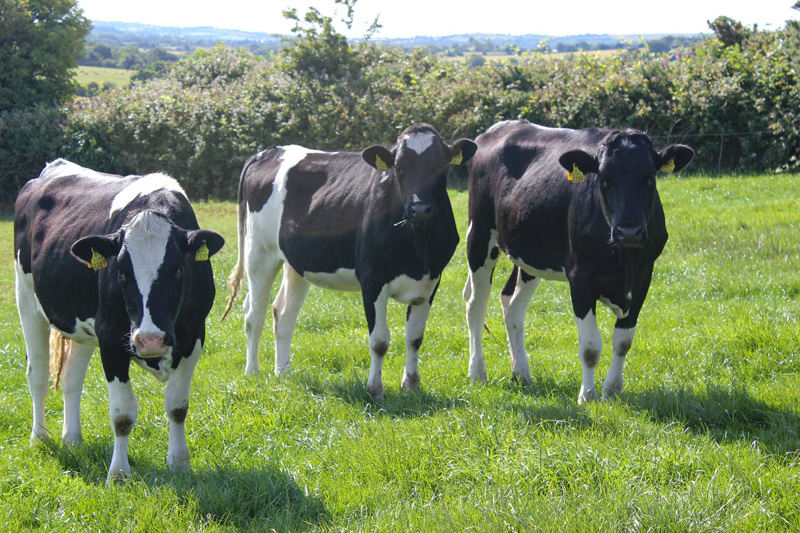The nights are getting slightly longer as we have passed summer’s peak. However, grass growth rates are excellent on most farms due to the recent rain and mild weather.
We have had a steady soil temperature of 15° for the past three weeks, while it has been lower on southern farms, and it has kept growth rates well above demand to create weekly grass surpluses.
When stocked at four cows per hectare – it’s a good complaint.
These grass surpluses have been taken out within a week of walking the farm and, unless we have low demand, we don’t let these covers grow into a silage cover.
Heavier covers cause slower regrowth and can lead to deficits later in the rotation when growth rates drop below demand.
Focusing on rotation length
With the beginning of August upon us, we now have to put targets in place to extend our grazing rotation from 21 days to 23-25 days. We also need to set a cover per cow target of 190-200kg/cow.
These are the Teagasc recommended targets for the end of July to enable us to reach a 30-day rotation by the end of August (adding one day per week to our rotation).
While it’s good to have a target, we shouldn’t generalise too much. Some farms will continue to grow 70-80kg/ha/day for the next three-to-four weeks and, therefore, lengthening the rotation by a few days now will lead to a huge grass build up too early.
These surpluses will have to be taken out in a few weeks and this will reduce growth rates and effect the quantity of grass being built up on the farm.
We need to know our farms ability to grow grass in August and September so that we can set appropriate targets for ourselves – not generalised targets.
We have averaged 80kg/ha of growth for the past four weeks (ranging from 55kg/ha to 113kg/ha), which has been great.
But, from mid-August onwards, we will see a sharp decline in growth. Therefore, we need to factor this in when creating a plan for autumn.
Grass quality
As pre-grazing covers will be increasing, we need to ensure we have a clean base to build grass upon.
Failure to clean up any clumpy / poor-quality paddocks now will cost us dearly when we are trying to graze heavier covers in September.
If a grass surplus is identified following a walk, don’t select the heaviest covers to graze first but rather the paddocks requiring cleaning out – even if these covers are only 800-1,000kg/ha.
It’s much more important to correct quality on these than just to do a ‘click exercise’ by grazing the heaviest covers until the cover per cow is where you want it to be.
It’s worth comparing your targets to fellow farmers in your discussion group who may have similar farms and growth rates.
Don’t forget about young stock ground
Young stock ground is often forgotten about when it comes to managing quality. Where possible, treat it just as you would the milking platform.
Excellent grass quality will maximise calf live weight gain and, as a result, lead to a reduction in the quantity of concentrates required over the winter period.
Have you weighed your stock recently?
Ideally, spring-born heifers should be 170kg (Holstein Friesian) or 155kg (crossbreds). In-calf Holstein Friesian heifers should weigh more than 400kg and crossbreds should be around 370kg.
The end of July is a good time to work out what the average herd live weight is for spring calving herds, as cows will be six months calved on average.
I have been on very few farms that have weighed a few cows from each lactation to calculate what their average weight is. Again, generalising this figure creates false targets for young stock to meet.
Breeding for the milking herd is now coming to an end and, all going well, the fertility will reflect the excellent summer we have had.
Scanning can be carried out from 25 days after the bull has been removed from the herd. If you get the results you were hoping for, make sure to praise any staff that helped realise this – be they full-time or part-time employees.
Too often we set targets and when we achieve them, we don’t appreciate or praise the efforts others, as well as ourselves, have put in.
- Plan rotation length extension over the next four weeks;
- Correct any poor quality swards on the milking platform and young stock ground;
- Weigh young stock;
- Get off the farm for at least a week and forget about everything.


